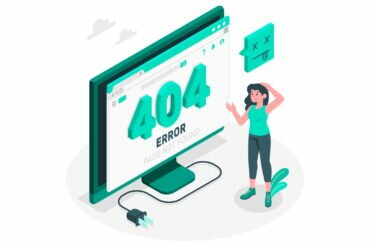Etherscan is a blockchain explorer, search, API, and analytics platform for Ethereum. Launched in 2015, the platform is one of the earliest and longest-serving independent projects built on the Ethereum network. Etherscan provides equitable access to blockchain data.
Currently, most decentralized applications (DApps) are built on the Ethereum blockchain. Using Etherscan, you can easily explore and search the Ethereum blockchain for addresses, transactions, token prices, and other activities that operate on the same network.
A useful tool for decentralized application users
Even if you’re not familiar with decentralized applications, you might have heard about Ethereum, Ether Wallet, or Smart Contracts. Etherscan was developed to help users search, confirm, and validate transactions done on the Ethereum blockchain. Like other DApps, it operates on the Ethereum network.
To help you get a clear grasp of what Etherscan is all about, you need to understand the terms used therein. The platform has plenty of terms and strings that could be confusing and overwhelming. All the same, once you know them, the platform is a great support system for anyone dealing with the Ethereum network.
How to read an Ethereum transaction
Etherscan allows you to track the historical transaction on the Ethereum network in the same way you can track online shopping packages. You simply need to enter your address into the search box. The system scans the address, and you can easily see the balance, Ether (ETH) value, and all other transactions made through the same address. The following screenshot shows how this works:
Additionally, you can click on a random TxHash to view the details of a specific transaction. The following screenshot illustrates:
To help you understand the data displayed, you need to understand the following terms:
- TxHash: Another name for the transaction ID, TxHash, refers to a unique identifier that the system generates each time a transaction is performed. This identifier can help you track and trace the position of a transaction.
- Block Height: This refers to the block number in which a particular transaction was included.
- TimeStamp: This denotes the time a transaction entered the blockchain or the time the block was mined.
- From/To: This refers to the sending and receiving or Ethereum addresses.
- Value: This denotes the amount of ETH sent and its equivalent value in USD
- Gas Limit: Refers to the maximum amount of gas a sender is willing to purchase for the transaction.
- Gas Used by Txn: This is the actual amount of gas used for the transaction.
- Gas Price: This is the price of gas in ETH, determined by miners and measured in Gwei.
- Actual Tx Cost/Fee: This refers to the product of gas used and gas cost in USD value.
It’s important to note that you can equally check out various types of transfer events by clicking the following tabs:
Etherscan as a smart contract tracker
All Decentralized Applications (DApps) on Ethereum run on Smart Contracts. These self-executing contracts have their terms of agreement between buyers and sellers written directly into lines of code. The code and the integrated agreements exist in a distributed and decentralized blockchain network.
Smart Contracts provide a clear indication of a DApp’s level of activity compared to normal addresses. Another essential tool, dapp.com ranking, can further process and visualize this information and eventually provide a summarized index to evaluate the health and growth of potential DApp projects.
To get full access to the contract code where you can closely look at the transaction rule-sets highlighted in the code, you can just click on the “Code” tab. However, this is only for experts who can read the code.
Etherscan as an ERC721 Tracker
At the core of blockchain technology is the ability to ensure that there’s only one digital copy of something at any given time. This makes every crypto item unique and linked to its own value. All the popular DApps create unique, digital collectibles on top of the blockchain.
Using the ERC721 token tracker, you can easily have a general view of the activity level associated with a particular DApp collectible. The following screenshot illustrates the point.
Etherscan as Gas Price Tracker
Another important feature of Etherscan is its ability to function as a gas price tracker. Network congestion is a major issue for both Ethereum Smart Contracts and other networks. Such congestion can cause gas prices to increase. It can also lead to increased transaction costs or failed transactions.
Cheaper gas costs imply a cheaper cost of running and using DApps. Therefore, it’s advisable to check the gas price tracker and adjust the fees before confirming a transaction. Other Ethereum gas trackers also exist, including Gitcoin, Ether Gas Station, and others.
Charts and Statistics
Finally, yet importantly, Etherscan allows users to get a full overview of the Ethereum Network. This is possible through the Ether Market analysis and clicking on the “Charts and Stats” tab.
Final Word on Etherscan
Overall, Etherscan remains an excellent resource for all Ethereum Network users. On this website, they can easily monitor transactions, check on smart contracts and tokens, read charts and statistics, and much more. As more DApp projects are unveiled, this Etherscan will remain a practical tool to help users stay on top of the Ethereum network.
All the same, it has its share of challenges. For example, in terms of data tracking, some of its functions, such as “Ethereum Dictionary,” should be updated and supplemented. Used wisely, Etherscan can definitely improve your Ethereum Blockchain experience and make it more enjoyable.





